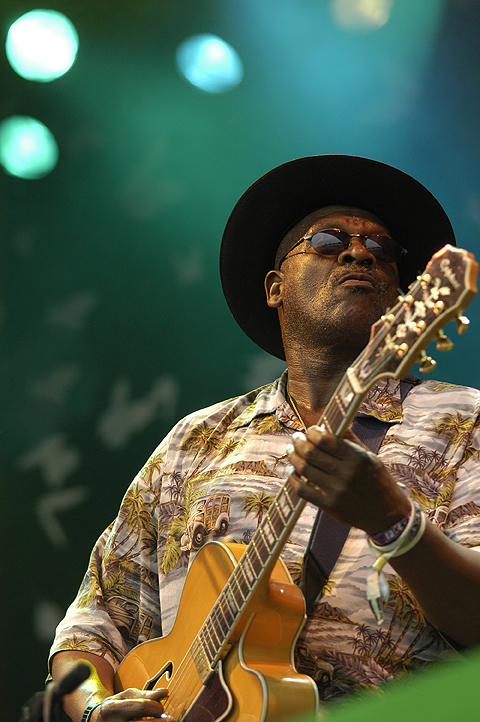Taj Mahal: A Journey Through the Blues and Beyond
Taj Mahal, born Henry Saint Clair Fredericks Jr. on May 17, 1942, in Harlem, New York, is one of the most eclectic and influential figures in American blues. With a career spanning over six decades, Taj Mahal has not only preserved the legacy of traditional blues but also expanded its boundaries by incorporating elements of world music, including Caribbean, African, Hawaiian, and South Pacific sounds. His innovative spirit, rich discography, and global influences have earned him critical acclaim and a revered place in the history of modern music.
Early Life and Musical Roots
Taj Mahal was born into a musical and culturally rich household. His father, a jazz pianist and arranger originally from the Caribbean, introduced him to a wide range of musical styles, from jazz and gospel to Afro-Caribbean rhythms. His mother, a schoolteacher and gospel singer from South Carolina, provided a strong African-American cultural foundation. The family home was filled with music and intellectual curiosity, which had a profound effect on young Henry.
As a teenager growing up in Springfield, Massachusetts, he became proficient in multiple instruments, including the piano, guitar, harmonica, and banjo. He was particularly drawn to African and Afro-Caribbean sounds, as well as the Delta blues of artists like Robert Johnson, Muddy Waters, and Lead Belly. It was during this time that he adopted the stage name “Taj Mahal,” inspired by a series of dreams and a deepening spiritual awareness.
Musical Career and Rise to Prominence
After earning a degree in agriculture and animal husbandry from the University of Massachusetts Amherst, Taj Mahal moved to Los Angeles in the mid-1960s, where he formed the Rising Sons with guitarist Ry Cooder. Though the band disbanded early, it helped launch his solo career.
His self-titled debut album, Taj Mahal (1968), featured gritty interpretations of blues standards and introduced his distinct style—deeply rooted in tradition yet boldly innovative. The follow-up albums The Natch’l Blues (1968) and Giant Step/De Ole Folks at Home (1969) showcased his growing interest in blending blues with other musical traditions.
A World of Influences
Taj Mahal’s music began to take on a more global character in the 1970s. Albums like Mo’ Roots (1974) and Music Fuh Ya’ (Musica Para Tu) (1977) incorporated reggae, calypso, and jazz influences. He traveled extensively, particularly to the Caribbean, Africa, and the South Pacific, studying traditional music and incorporating these sounds into his work.
One of his most celebrated projects was the Kulanjan (1999) album, recorded with Malian kora master Toumani Diabaté. The album was hailed as a brilliant fusion of African and American blues, reflecting the deep historical connections between the two musical traditions.
Recognition and Awards
Over the years, Taj Mahal has received widespread recognition for his contributions to music. He has been nominated for multiple Grammy Awards and won three, including:
- Best Contemporary Blues Album for Señor Blues (1997)
- Best Contemporary Blues Album for Shoutin’ in Key (2000)
- Best Contemporary Blues Album for TajMo (2017), a collaboration with Keb’ Mo’
In 2006, he received a Lifetime Achievement Award from the Americana Music Association. He was also honored with the National Heritage Fellowship from the National Endowment for the Arts—the highest honor in the United States for folk and traditional arts.
Continuing Legacy
Taj Mahal remains active well into his 80s, performing live and recording new material. His music continues to evolve while maintaining a strong foundation in the blues. His ability to bridge cultures and genres has made him a unique figure in American music—respected not only as a bluesman but also as a musical ambassador who has expanded the scope of the genre.
Through his long and vibrant career, Taj Mahal has redefined what the blues can be. Whether channeling the Mississippi Delta, West Africa, the Caribbean, or the Pacific Islands, he brings a global voice to a deeply American tradition. His enduring creativity and passion ensure that his influence will be felt for generations to come.


Comments are closed